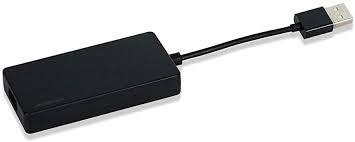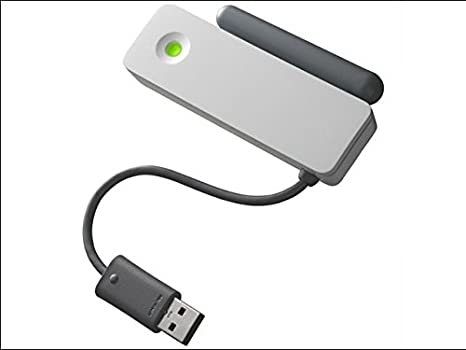Network Dongles: The Ultimate Guide to Wired & Wireless Connectivity
A network dongle is a small external device that plugs into a computer or other electronic device, enabling it to connect to a specific type of network. These dongles serve as an interface between a computer and a network, whether it is a wired Ethernet connection, a Wi-Fi network, or a cellular-data network.
Network dongles come in various types, including USB Wi-Fi dongles, USB Ethernet adapters, and cellular modem dongles. These devices are particularly useful for users who need additional connectivity options for their computers, laptops, gaming consoles, and even smart TVs. A common example of a network dongle is Google Chromecast, which connects to a television and allows wireless streaming of media.
ad

Types of Network Dongles
1. Dongles for Wired Networks
A wired network dongle allows a device without an Ethernet port to connect to a wired network. These dongles usually have a short cable with connectors on both ends, typically no longer than six inches.
ad
Early Use of Wired Dongles
In the past, wired dongles were widely used to connect PCMCIA (Personal Computer Memory Card International Association) adapters in laptops to local networks. The dongle had one end designed to fit the thin PCMCIA slot and the other end featuring either:
- RJ-45 connector: Used to connect an Ethernet cable for high-speed internet access.
- RJ-11 connector: Used for dial-up internet access over a traditional telephone line.
Modern USB-to-Ethernet Adapters
Today, most wired network dongles connect to computers via USB ports. A USB-to-Ethernet adapter is a popular choice for users who need a stable wired internet connection but do not have a built-in Ethernet port on their laptop or device.
Advantages of Wired Network Dongles
- More stable and faster internet connection than Wi-Fi.
- Less interference from other wireless devices.
- Ideal for online gaming, streaming, and large file transfers.
2. Dongles for Wireless Networks
While wireless networks eliminate the need for cables, external dongles are still required for some computers and devices to access Wi-Fi or cellular networks.
Types of Wireless Dongles
- USB Wi-Fi Dongle: Connects a computer to a Wi-Fi network when the device does not have built-in Wi-Fi capability.
- USB Modem Dongle: Provides mobile internet access via cellular data networks (4G/5G).
- Bluetooth Dongle: Allows a computer to connect to Bluetooth-enabled devices, such as keyboards, mice, and headphones.
- Gaming Dongles: Example: The Microsoft Xbox Wireless Adapter allows PCs to connect wirelessly to Xbox controllers for PC gaming.
Advantages of Wireless Network Dongles
- Portability – Easy to carry and use with multiple devices.
- Plug-and-play functionality – Simple installation process.
- No need for additional cables – Ideal for laptops and compact workspaces.

How Do Network Dongles Work?
A network dongle contains built-in hardware and software drivers to support the network type it is designed for.
How to Use a Network Dongle
- Plug the dongle into a compatible port (USB, PCMCIA, etc.).
- The operating system detects the device automatically and installs the necessary drivers.
- Users can configure settings through the computer’s network settings or provided software.
- Start using the network connection as per the dongle’s functionality (Wi-Fi, Ethernet, mobile data, etc.).
Most dongles are plug-and-play devices, meaning they work immediately upon connection. However, some require manual driver installation or software updates.
Internet dongles are compatible with televisions made by a variety of manufacturers, including but not limited to LG, Samsung, Panasonic, Sony, and Vizio.
Common Problems with Network Dongles
1. Compatibility Issues
- Some dongles may not be recognized by certain operating systems.
- A device must have the necessary drivers installed to function properly.
2. Physical Damage
- Dongles protrude from the side, back, or front of a computer, making them vulnerable to damage.
- Repeated insertion and removal may cause wear and tear on the ports.
3. Connection Failures
- Dongles can occasionally fail to connect to networks.
- Solution: Unplugging and re-plugging the dongle often resets the connection.
- Some dongles include LED indicators to show network activity.
4. Cost Considerations
- High-quality dongles, especially those with advanced networking features, can be expensive.
- Budget-friendly options may lack support for the latest network standards.
FAQs About Network Dongles
1. What is the purpose of a network dongle?
A network dongle allows a device to connect to a wired or wireless network. It is commonly used in laptops, desktops, gaming consoles, and smart TVs.
2. Can I use a USB Wi-Fi dongle on any computer?
Yes, as long as the computer has a USB port and the necessary drivers to support the dongle.
3. Are network dongles better than built-in Wi-Fi?
In some cases, USB Wi-Fi dongles can offer better range and speed compared to built-in Wi-Fi adapters, especially on older devices.
4. Do network dongles require software installation?
Most modern dongles are plug-and-play, but some may require manual driver installation or firmware updates.
5. Can I use a mobile data dongle as a Wi-Fi hotspot?
Yes, some USB modem dongles support hotspot functionality, allowing multiple devices to share a mobile data connection.
6. How do I choose the best network dongle?
Consider the following factors:
- Network Type: Wired (Ethernet) or Wireless (Wi-Fi, Cellular).
- Speed Requirements: Look for high-speed dongles (e.g., Wi-Fi 6, 5G modems).
- Compatibility: Ensure the dongle is compatible with your operating system.
- Portability: Choose a compact design if you need it for on-the-go use.
7. Can I use a network dongle for gaming?
Yes, wired USB-to-Ethernet adapters are recommended for gaming because they provide low latency and stable connections. Wi-Fi dongles can also be used, but performance depends on signal strength and speed.
8. Are USB network dongles secure?
Yes, but security depends on the network protocols used. Ensure you connect to encrypted networks (WPA3, WPA2) and keep firmware updated to prevent vulnerabilities.
Conclusion
Network dongles are essential for users who need additional connectivity options for their devices. Whether you require a USB Wi-Fi dongle for wireless internet, a USB-to-Ethernet adapter for stable wired connections, or a USB modem dongle for mobile data, there are numerous options available. Understanding how these dongles work and their potential drawbacks can help you choose the right device for your needs.
By optimizing your choice based on speed, security, and compatibility, you can ensure a seamless internet experience whether at home, work, or on the go.
ad


Comments are closed.